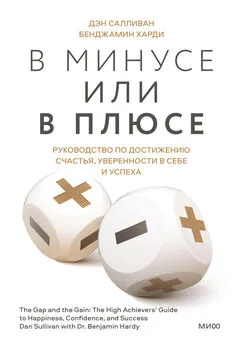Бен Уилсон - Метрополис. Город как величайшее достижение цивилизации
- Название:Метрополис. Город как величайшее достижение цивилизации
- Автор:
- Жанр:
- Издательство:Эксмо
- Год:2021
- Город:Москва
- ISBN:978-5-04-157333-1
- Рейтинг:
- Избранное:Добавить в избранное
-
Отзывы:
-
Ваша оценка:
Бен Уилсон - Метрополис. Город как величайшее достижение цивилизации краткое содержание
Британский историк Бен Уилсон, автор научных бестселлеров, расскажет удивительную историю города как явления. Совершив путешествие по знаменитым городам прошлого и настоящего, вы почувствуете силу и мощь городов, их влияние на историю человечества и цивилизацию в целом.
В формате PDF A4 сохранён издательский дизайн.
Метрополис. Город как величайшее достижение цивилизации - читать онлайн бесплатно ознакомительный отрывок
Интервал:
Закладка:
95
Hussam Hussein Salama, ‘Tahrir Square: a narrative of public space’, International Journal of Architectural Research , 7:1 (March 2013), 128–38; Joshua E. Keating, ‘From Tahrir Square to Wall Street’, Foreign Policy , 5/10/2011, https://foreign-policy.com/2011/10/05/from-tahrir-square-to-wall-street/.
96
Jeffrey Hou, ‘(Not) Your Everyday Public Space’, in Hou (ed.), Insurgent Public Space: guerrilla urbanism and the remaking of contemporary cities (London, 2010), pp. 3–5.
97
R. E. Wycherley, The Stones of Athens (Princeton, 1978), pp. 91–2.
98
Judith L. Shear, Polis and Revolution: responding to oligarchy in classical Athens (Cambridge, 2011), pp. 113ff; Gabriel Herman, Morality and Behaviour in Democratic Athens: a social history (Cambridge, 2006), pp. 59ff.
99
Shear, pp. 178ff.
100
Ibid., p. 50.
101
James Watson, ‘The Origin of Metic Status at Athens’, Cambridge Classical Journal, 56 (2010), 259–78.
102
Александрия Оксианская.
103
Justin Pollard and Howard Reid, The Rise and Fall of Alexandria, Birthplace of the Modern World (London, 2006), pp. 1ff, 24–6.
104
Аристофан, «Птицы». Пер. А. И. Пиотровского.
105
5,8 метра.
106
7315 метров.
107
30,48 метра.
108
Dio Chrysostom, Discourses, 32: 36.
109
Fikret K. Yegül, Baths and Bathing in Classical Antiquity (Cambridge, MA, 1995), p. 31.
110
12,2 метра.
111
Richard Guy Wilson, McKim, Mead and White Architects (NY, 1983), pp. 211–12.
112
Garret G. Fagan, Bathing in Public in the Roman World (Ann Arbor, 1999), pp. 34–5.
113
Yegül, p. 30.
114
Ibid., p. 32.
115
Сенека, «Нравственные письма к Луцилию», письмо 86. Пер. С. А. Ошерова.
116
Fagan, p. 317.
117
Janet Smith, Liquid Assets: the lidos and open-air swimming pools of Britain (London, 2005), p. 19.
118
Ronald A. Davidson and J. Nicholas Entrikin, ‘The Los Angeles Coast as a Public Place’, Geographical Review, 95:4 (October 2005), 578–93.
119
Michèle de la Pradelle and Emmanuelle Lallement, ‘Paris Plage: “the city is ours”’, Annals of the American Academy of Political and Social Sciences, 595 (September 2005), 135.
120
5,63 километра.
121
Peter Ackroyd, Thames: sacred river (London, 2007), p. 339; The Works of the Rev. Jonathan Swift (London, 1801), Vol. 15, p. 62; The Times, 24/6/1865.
122
Pall Mall Gazette, 13/7/1869.
123
Andrea Renner, ‘A nation that bathes together: New York City’s progressive era public baths’, Journal of the Society of Architectural Historians, 67:4 (December 2008), 505.
124
Jeffrey Turner, ‘On boyhood and public swimming: Sidney Kingsley’s Dead End and representations of underclass street kids in American cultural production’, in Caroline F Levander and Carol J. Singley (eds.), The American Child: a cultural studies reader (New Brunswick, 2003); Marta Gutman, ‘Race, place, and play: Robert Moses and the WPA swimming pools in New York City’, Journal of the Society of Architectural Historians, 67:4 (December 2008), 536.
125
Marta Gutman, ‘Equipping the public realm: rethinking Robert Moses and recreation’, in Hilary Ballon and Kenneth T. Jackson (eds.), Robert Moses and the Modern City: the transformation of New York (NY, 2007).
126
Gutman (2008), 540; Smith, Liquid Assets, p. 30.
127
Jeff Wiltse, Contested Waters: a social history of swimming pools in America (Chapel Hill, 2007), p. 94.
128
Edwin Torres, Carlito’s Way: rise to power (NY, 1975), pp. 4–6.
129
Fagan, p. 32.
130
Jeremy Hartnett, The Roman Street: urban life and society in Pompeii, Herculaneum, and Rome (Cambridge, 2017), p. 1.
131
Juvenal, Satire, III:190–204.
132
Cicero, Ad Attica, 14.9; Strabo, V: III, 235; Mary Beard, SPQR: a history of ancient Rome (London, 2015), pp. 455ff; Jerry Toner, Popular Culture in Ancient Rome (Cambridge, 2009), pp. 109ff.
133
Стадион в пригороде Парижа Сен-Дени.
134
Louise Revell, ‘Military bathhouses in Britain: a comment’, Britannia, 38 (2007), 230–7.
135
Ian Blair et al., ‘Wells and bucket-chains: unforeseen elements of water supply in early Roman London’, Britannia, 37 (2006).
136
Fagan, p. 188; Piers D. Mitchell, ‘Human parasites in the Roman world: health consequences of conquering an empire’, Parasitology, 144:1 (January 2017), 48–58; A. M. Devine, ‘The low birth-rate in ancient Rome: a possible contributing factor’, Rheinisches Museum für Philologie (1985), 313ff.
137
David Frye, ‘Aristocratic responses to late Roman urban change: the examples of Ausonius and Sidonius in Gaul’, Classical World, 96:2 (Winter 2003), 185–96.
138
Yegül, p. 314.
139
Matthew Kneale, Rome: a history in seven sackings (London, 2017), p. 40.
140
Ibid., pp. 94–5.
141
Калька с английского skinship .
142
Дау – название арабских судов с косым парусным вооружением.
143
20 278 километров.
144
Regina Krahl, John Guy, J. Keith Wilson and Julian Raby (eds.), Shipwrecked: Tang treasures and monsoon winds (Singapore, 2010); Alan Chong and Stephen A. Murphy, The Tang Shipwreck: art and exchange in the 9th century (Singapore, 2017).
145
See Krahl et al., and Chong and Murphy.
146
Али ибн Абу-Талиб умер в 661 году, задолго до основания Багдада, так что неясно, кому принадлежит цитата.
147
Justin Marozzi, Baghdad: city of peace, city of blood (London, 2014), p. 92.
148
Hugh Kennedy, ‘From Polis to Madina: urban change in late antiquity and early Islamic Syria’, Past and Present, 106 (February 1985), 3–27.
149
Ibid.; Besim Hakim, ‘Law and the City’, in Salma K. Jayyusi (ed.), The City in the Islamic World (Leiden, 2008), pp. 71–93.
150
Marozzi, p. 92.
151
Lincoln Paine, The Sea and Civilisation: a maritime history of the world (London, 2015), p. 265.
152
Xinru Liu, The Silk Road in World History (Oxford, 2010), p. 101.
153
Nawal Nasrallah, Annals of the Caliphs’ Kitchens: Ibn Sayyar al-Warraq’s tenth-century Baghdadi cookbook (Boston, MA, 2007), p. 35.
154
David Waines, ‘“Luxury foods” in medieval Islamic societies’, World Archaeology, 34:3 (February 2003), 572.
155
International Labour Office, Women and Men in the Informal Sector: a statistical picture (Geneva, 2002); ‘Mumbai Street Vendors’, Guardian, 28/11/2014; Henry Mayhew, London Labour and the London Poor (4 vols; London, 1861–2) Vol. I, pp. 160, 165.
156
Omiko Awa, ‘Roasted Corn: satisfying hunger returns good profit’, Guardian (Nigeria), 21/9/2015.
157
Mayhew, Vol. I, p. 158.
158
Charles Manby Smith, Curiosities of London Life; or, phrases, physiological and social of the great metropolis (London, 1853), p. 390.
159
Пер. Е. Ланна и А. Кривцовой.
160
Teju Cole, Every Day is for the Thief (London, 2015), p. 57.
161
S. Frederick Starr, Lost Enlightenment: central Asia’s golden age from the Arab conquest to Tamerlane (Princeton, 2013), pp. 132ff.
162
Marozzi, p. 65.
163
Starr, pp. 167ff.
164
Ibid., pp. 37ff, 62ff.
165
Georgina Herman and Hugh N. Kennedy, Monuments of Merv: traditional buildings of the Karakum (London, 1999) p. 124.
166
Starr, pp. 28–9.
167
Англ. gibberish от Geber .
168
Ibid., pp. 162–3.
169
Hyunhee Park, Mapping the Chinese and Islamic Worlds: cross-cultural exchange in pre-modern Asia (Cambridge, 2012), p. 77.
170
Glen Dudbridge, ‘Reworking the World System Paradigm’, Past and Present, 238, Supplement 13 (November 2018), 302ff.
171
Pius Malekandathil, Maritime India: trade, religion and polity in the Indian Ocean (Delhi, 2010), pp. 39ff.
172
Paine, p. 273.
173
Более 19 тыс. километров.
174
Ibid., p. 306.
175
Kanakalatha Mukund, Merchants of Tamilakam: pioneers of international trade (New Delhi, 2012), pp. 164–6.
176
Dashu Qin and Kunpeng Xiang, ‘Sri Vijaya as the entrepôt for circum-Indian Ocean trade: evidence from documentary records and materials from shipwrecks of the 9th—10th centuries’, Étudies Océan Indien, 46–7 (2011).
177
Более 6400 километров.
178
Horst Boog, The Global War: Germany and the Second World War, Vol. VI (Oxford, 2015), p. 565.
179
Paine, p. 332; Helmond von Bosau, Slawenchronik, ed. H. Stoob (Darmstadt, 1983); A. Graßmann (ed.), Lübeckische Geschichte (Lübeck, 2008), pp. 1–123; H. Stoob, Lübeck (Altenbeken, 1984).
180
Bosau, p. 304; David Abulafia, The Boundless Sea: a human history of the oceans (Oxford, 2019), p. 424.
181
Peter Johanek, ‘Seigneurial Power and the Development of Towns in the Holy Roman Empire’, in Anngret Simms and Howard B. Clarke (eds.), Lords and Towns in Medieval Europe: the European Historic Towns Atlas Project (London, 2015) p. 142.
Читать дальшеИнтервал:
Закладка:
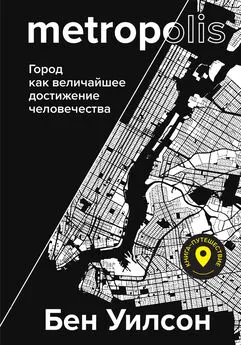

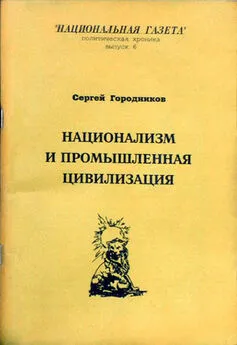
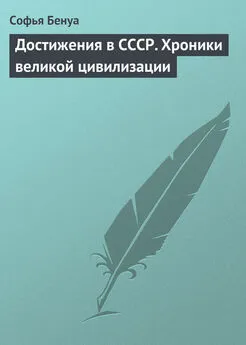
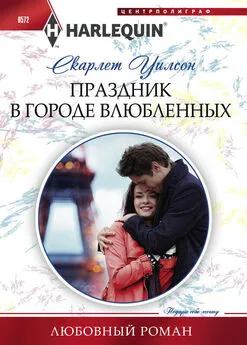
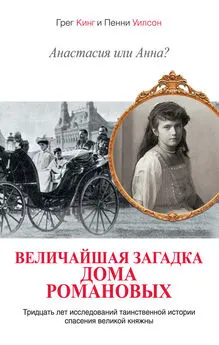
![Теа фон Харбоу - Метрополис. Индийская гробница [Романы]](/books/1096816/tea-fon-harbou-metropolis-indijskaya-grobnica-rom.webp)
